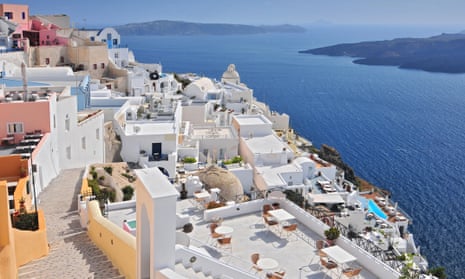There’s no shortage of measures that homeowners and businesses can take to lessen their environmental footprint – from better insulation and double glazing, to easing up on air-con usage and swapping in LED lights.
One part of the house that seems to be attracting more than its fair share of attention is the roof. Replacing a standard roof with a lovingly cultivated green roof of plants or adorning it with increasingly trendy solar panels can do wonders for reducing a building’s carbon footprint.
Rooftop solar panels are an obvious option for many, and increasingly affordable. The average price of a residential solar photovoltaic (PV) system has been steadily dropping, from $2.40 per watt in 2012 to $1.58 per watt in March this year, according to Solar Choice’s PV price index. On the commercial front, too, prices are at an all-time low of just $1.23 per watt.
Add to this the advent of affordable battery storage systems, and Tesla’s plans to roll out roof tiles that dispense with the need for separate solar panels over the coming months, and rooftop solar has never been more attractive.

But a building’s rooftop can be used for more than just harvesting the sun’s rays. Indeed, cool roofs aim to do exactly the opposite, reflecting as much of the sun’s energy as possible. A flat roof in the midday sun receives about 1,000 watts of sunlight per square metre. A dark roof will absorb most of this energy, heating the roof and underlying building, as well as the surrounding air. Air conditioners that suck in this hot air can further exacerbate a building’s cooling requirements.
“If you have a cool roof, that problem can be eliminated,” says Geoff Smith from the University of Technology Sydney, a specialist in green roofing technologies.
The easiest way to reflect the sun’s rays is to paint a roof white – something the Greeks have been doing for centuries. A white roof reflects around 85% of the sunlight that hits it – at least when it’s clean – and heats to just a few degrees warmer than the outside air temperature. A black roof, by contrast, can heat to more than 80C, according to sustainable construction expert Chris Jensen from the University of Melbourne.
“On a black tile roof, you could fry an egg, and on a cool roof you could walk on it in your bare feet,” says Jensen, “that’s the magnitude of the difference.”
Recently, Smith’s group and others have produced roof coatings that keep roof temperatures even lower than the ambient temperature. They achieve this by reflecting sunlight using thin plastic sheets – akin to a plastic food wrap – often combined with layers of silver and other reflective nanoparticles.
But there’s a catch. “These experiments might look marvellous in the scientific literature,” says Smith, but in most cases, they “just won’t work in practice.” That’s because most of these super-reflective coverings look essentially like a mirror. For a sloped residential house, the result would be an eyesore, if not a danger to nearby road users.
Unlike green roofs, which can require considerable infrastructure to support and maintain, cool roofs can be achieved with a painted-on coating to an already existing roof. While white reflects the most visible light, coloured roofs can also be made cooler by coating with materials designed to reflect light in the infrared spectrum, which also contributes to how hot a roof gets. When combined with an elastomeric weatherproof coating, upgrading to a cool roof can add years to the life of an ageing roof, says Jensen.
The benefits of a cool roof extend beyond the building it sits upon. The heated air that sits above dark roofs is a large contributor to the urban heat island effect, which can put urban temperatures three to four degrees warmer than surrounding areas. Modelling of urban heating in Chicago estimated that the air temperature above cool roofs would be reduced by 7-8C compared with conventional roofs. Cool roofs even outperformed green roofs – by about a degree.
The energy savings are also large. Increasing a roof’s reflectivity from 10-20% to around 60% can cut a building’s cooling costs by more than 20%. But not all buildings benefit – a high-rise apartment or office block won’t reap anywhere near the same benefits as a sprawling low-rise warehouse, shopping centre or airport, or even a single-story dwelling. As an added bonus, work by Jensen and his colleagues has shown that solar panels installed on a cool roof produce almost 7% more electricity on a typical day than those installed on a conventional roof.
At a global level, the impact is nothing to be scoffed at. In 2009, researchers at the Lawrence Berkley National Laboratory in the US estimated that some 24 gigatonnes of carbon dioxide emissions per year could be offset if the world’s cities adopted cool roofs – not bad considering that urban areas constitute just 1% of Earth’s land area. The offset for a single house with a 100 sqm roof area is around 6 tonnes of carbon dioxide – a decent chunk of the 26 tonnes per capita of greenhouse gases that Australians are currently emitting.
One criticism of cool roofs is that the benefits of cooling in summer can be outweighed by an increased demand for heating in winter. But according to Smith, roofs are rarely the main culprit for heat loss in Australian buildings. Sealing leaks is far more effective in preventing heat loss, according to modelling that he and colleagues conducted in 2012.
One of the main challenges, says Smith, is confronting the aesthetics. Although lighter-coloured roofs are becoming more popular in the hotter climate of Queensland, he says, “a lot of people shy off the idea of a white roof.”

Comments (…)
Sign in or create your Guardian account to join the discussion